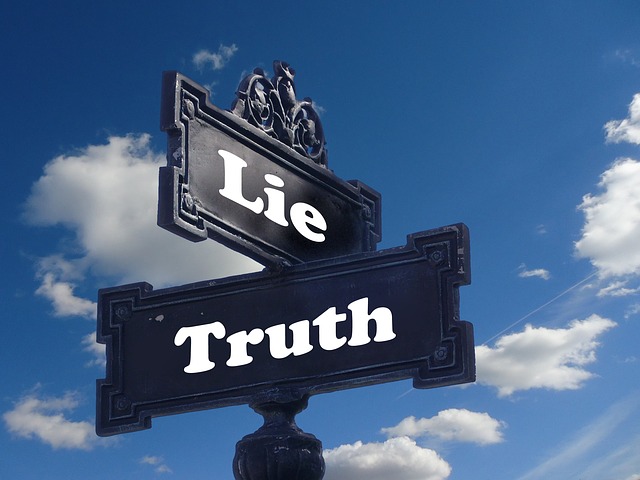
AHJ Perspective: Truth Management
“Truth or Consequences” was originally a television show in the early 1950s. On that show, contestants received roughly two seconds to answer a trivia question correctly. The way the show went, if the contestant could not complete the “truth” portion, there would be a “consequence.” They were usually required to perform some kind of dumb stunt. In almost all cases the consequences were supposed to be humorous. The show is no longer on television but there are many situations in our life for which there are truths or consequences. From the perspective of this column, there are truth and consequences of putting residential sprinklers into play in communities. For example, those communities that have embraced residential sprinklers have a positive tool in reducing loss of life in our communities. Those communities that have prohibited the use of residential sprinklers are doomed to continue the track record of the past. The truth is residential sprinklers work. The consequences are if you do not use them, lives will continue to be lost.
Perhaps we need to put the truth and consequence test to those who continually misrepresent the truth about residential sprinklers. For over 40 years now, we have been contending with the myths of sprinklers with no consequence for those who misrepresent the truth. In a previous column, I alluded to the need to stop talking about the myths and start talking about the truths. Let’s re-examine this phenomenon. In a recent NFPA Journal, author Stephanie Schorow published an article entitled “The Front Line.” In this same issue, there was a column on “Debunking the 10 Myths.”
The article identified 10 myths. They are as follows:
- Every time I burn the bacon, I’ll set off a sprinkler.
- I have smoke alarms so I don’t need sprinklers.
- Smoke alarms will give my family time to safely exit if there is a fire.
- When a fire occurs, every sprinkler will activate and everything in the house will be ruined by water damage.
- The fire department will be able to put out the fire and save my things.
- Newer homes are safer homes.
- Home fire sprinklers leak or activate accidentally.
- Sprinklers are unattractive and will ruin the aesthetics of my home.
- Sprinklers are not practical in colder climates, since the pipes will freeze and cause water damage.
- The water damage caused by sprinklers will be more extensive than the fire damage.
You probably have an answer for every one of those myths already committed to memory because you face them in public hearings or in interacting with elected officials. The problem with this list of 10 items is that they are not myths, they are outright lies. Perhaps it’s time to adopt a different philosophy. Reggie Edwards, deputy fire marshal of Nampa, Idaho, is an individual who has seen the wisdom of this way. Edwards states, “We teach them the facts, then they can make informed decisions.”
What are some of the basic truths that we need to inform the public about?
- The average amount of fire loss in a home with sprinklers is $2,166. The average amount of fire loss in a home without sprinklers is $45,019.
- Ninety percent of fires in sprinklered properties are contained by the operation of just one sprinkler.
- An average amount of water discharged by sprinklers per fire is 341 gallons. The average amount of water discharged by firefighter hoses is 2,935 gallons.
- The amount of property damage attributed to fire in 2015 is $7 billion.
- The number of civilians who have died in home fires in the U.S. in 2015 is 2,560.
- The percentage of respondents in sprinklered homes who said home fire sprinklers lowered the cost of home owner’s insurance was 68 percent.
- Eighty percent of civilian fire fatalities occur in home fires.
- Seventy-five percent of civilian fire injuries occur in home fires.
- A home fire occurs every 86 seconds.
- The number of civilians who died per 1,000 home fires in 2013 was 7.5.
Summary
Myths are like fairytales. They are often repeated and seldom questioned. But, the decision to put sprinklers into homes is not a fairytale. It is a matter of public policy. In the old TV show “Truth or Consequences,” the consequences are always a zany or embarrassing stunt. In the world of fire protection, the consequences of the items previously mentioned are accumulative and have an impact upon our society.
Today one might say that myth and consequence are more dangerous than truth and consequence. Setting the record straight on what is true about sprinklers has a favorable consequence on the community, whereas the elimination of sprinklers has a negative consequence in the community. The more we talk about the truth, the less room there is for mythology. The less room there is for mythology, the more likely we will see a positive outcome. If you go to the U.S. Census Bureau and look at the population changes that are reflected and the current census reports, it is clear that the population is going to increase. Some of those communities will be using sprinklers and that’s the truth. Some of those communities will not be using sprinklers and that’s the consequence. Actions that are taken today will definitely have consequences as these populations become real.
REFERENCES:
1. NFPA Journal, High Hopes, Special Issue,
October 2016
2. NFPA Journal, October 2016
 ABOUT THE AUTHOR: Ronny J. Coleman is currently the president of Fireforceone. He is a past president of the IAFC and CFAI. Over his lifetime, he has received numerous awards including the AFSA’s 1989 Henry S. Parmelee Award, the 2011 Mason Lankford Award from the Congressional Fire Services Institute, and the Tom Brennan Lifetime Achievement Award from Fire Engineering in 2014. He continues as a contributor to the fire service in many ways.
ABOUT THE AUTHOR: Ronny J. Coleman is currently the president of Fireforceone. He is a past president of the IAFC and CFAI. Over his lifetime, he has received numerous awards including the AFSA’s 1989 Henry S. Parmelee Award, the 2011 Mason Lankford Award from the Congressional Fire Services Institute, and the Tom Brennan Lifetime Achievement Award from Fire Engineering in 2014. He continues as a contributor to the fire service in many ways.

 Sprinkler Age A Publication of the American Fire Sprinkler Association
Sprinkler Age A Publication of the American Fire Sprinkler Association
